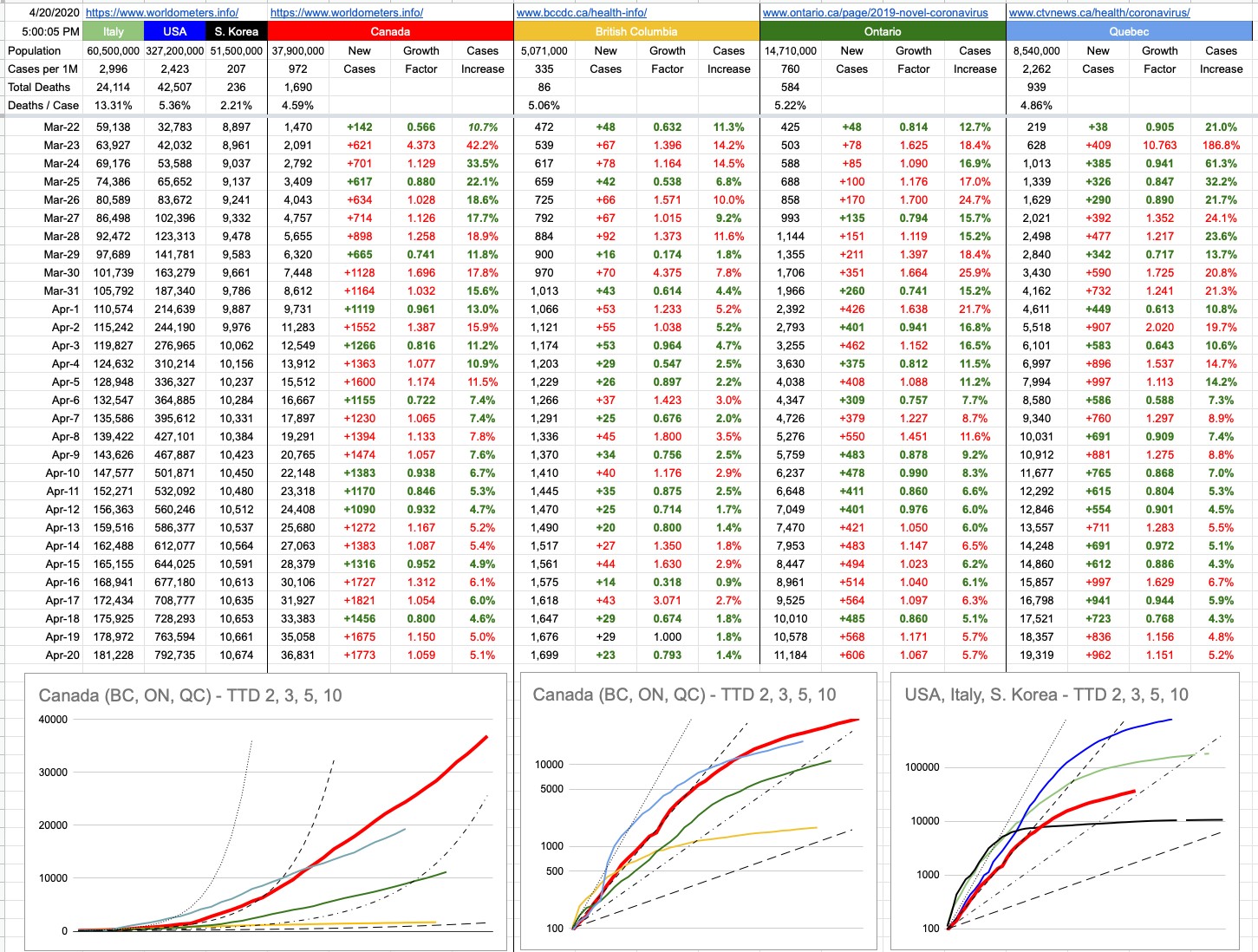Day 50 – May 5, 2020
As always, on the heels of Star Wars Day (May the Fourth be with you, if you don’t get it), comes Cinco de Mayo. I guess we’re all getting a little tired of hearing that same old refrain… “It’ll be different this year”. But yeah, indeed it will. As you may recall, around here, the first “celebrated” holiday affected was St. Patrick’s Day… and the decision to pull the plug on pub gatherings was made only a few days, if not hours, before March 17th. My first post of this entire series was on that day, me sitting here in front of the computer with a pint of Guinness, digging into some numbers, trying to figure this out for myself.
Good trivia question… how many countries in North America are called the United States? I obviously wouldn’t be asking this if the answer were obvious… the answer is two, because the official name of the other one is “Estados Unidos Mexicanos” — literally, the United States of Mexico.
Now that you’re back from Googling that, let’s continue…
There are 32 states in Mexico, and most of us haven’t heard of many of them. Looking at this list… the following stand out: Jalisco, Baja California Sur, and Nayarit… because I’ve vacationed there. Chihuahua, Sonora and Sinaloa stand out because they’re continually in the news related to drug cartels and violence (and cute dogs). Mexico City, of course. And Veracruz, but only because my buddy, two-time-Kentucky-Derby-winning-jockey Mario Gutierrez is from there.
The Mexican federal government has their hands full fighting this thing, but they have the added headache of the very powerful and ubiquitous drug cartels, who control many areas, especially near the border. It also doesn’t help that these criminals are stepping-up, handing out care packages to locals who happily accept them and who can use any help they can get. Big-time criminals love this sort of stuff — step up for the little guy, do more for the people than the government is doing, etc. Pablo Escobar was good at it. So was Al Capone. Optics.
There hasn’t been much talk of the border wall these days; remember, the big wall Trump was going to build and which Mexico was going to pay for. I think they may have built some parts, or maybe that was just refurbish/remodel. I don’t know. What I do know is that Mexico hasn’t paid a cent for it. Whatever.
The border-wall, or lack thereof, that worries me a lot more, is the virtual one that exists 30km south of here. For the moment, that border is closed, and that suits me just fine. And if our neighbours to the south could follow along with what’s best for the common good, I wouldn’t be against re-opening it. But, at the moment… well, at the moment, let’s look at a different state that borders Canada.
Recall the governor of Michigan, Gretchen Whitmer… at some point she called-out President Trump, labelling his federal response to the pandemic as “slow” and “mind-boggling”. Trump’s response was to sit back, reflect and admit he was wrong, and quickly move to provide whatever help he could.
Ha ha! Of course not. As expected, he lashed back, made up a name for her on Twitter ("Gretchen ‘Half’ Whitmer” — because, I guess, she only does ‘half’ a job? Or because she's a half-wit?) — and proceeded to insult her. By the way, even by Trump’s infantile-nickname standards, that’s pretty lame. I would’ve expected something like “Grumpy Gretchen”. This was the governor that Trump made a point of not calling, and telling us all about it.
In any case, Governor Whitmer was doing the best she could under exceedingly difficult circumstances. As of yesterday, Michigan was in third place for most deaths in any state, and that’s not a good spot to be in when it’s only New York and New Jersey ahead of you. Going with the best advice she could get, from all of the intelligent people she’s surrounded herself with, by evaluating what’s going on elsewhere, by listening to her medical experts… Governor Whitmer renewed the state emergency order a few days ago, extending it from April 30th to May 28th. This led to loud and crowded protests at the state Capitol building. You know the kind, lots of flags, guns and “MAGA” hats. But this time, add to the mix — nooses, Confederate flags and swastikas. With all due respect (which isn’t much), f#@& these people.
President Trump, upon whom the game “How low can he go?” is based, tweeted his support for the protesters, which in a sense validated and empowered their insanity. A man in Flint, Michigan shot and killed a security guard — who’d simply asked him to put on a mask. Also, in Holly, Michigan, a man wiped his nose on a store clerk who told the man he needed to wear a mask.
Michigan has a population of 10 million, exactly double that of British Columbia. But while we’ve had only 2,232 confirmed cases since day one, they’re over 44,000… a clean 20x… which makes it about 10x more than it would be if people were following orders. And while B.C. is at 121 deaths, Michigan is at 4,179… a staggering 35x. They’re not in good shape, and it’s about to get worse. And, of course, Michigan borders Canada. In fact, given the twisted border situation of Windsor and Detroit, parts of both countries are actually inside of each other. All I can say is I much prefer our Washington neighbours to the south, who I suspect wouldn’t be anywhere near as tolerant of the insanity. The Peace Arch border crossing has engraved on it “May these gates never be closed”. Indeed, those gates can’t literally be closed as they’re not hinged; they’re bolted into the stone. But virtually, the border is closed to all non-essential travel, and until things get sorted out and settled to both sides’ satisfaction, it needs to remain that way. We are doing well here, and we don’t need to mess with that. We apparently have bee-murdering hornets now visiting from Washington State. That’s enough for now.
On that note, around here, our single-digit increase (+8) in known cases is the lowest since March 14th, when things were just starting up, and heading in the wrong direction. Dr. Henry thinks we may be down to zero by the middle of June. We are approaching the end of the beginning, but there’s a ways to go. Moving too quickly can mess this up; things will be gradually eased, but it has to be done right. And if we do it right, and stick to the new normal for a while… we’ll be ok.
Wow, look at that sunshine… time to go get some Vitamin D… and after that, time to go crack open a bottle of Corona and find a slice of lime. Salúd.
View Original Post and All Comments on Facebook







